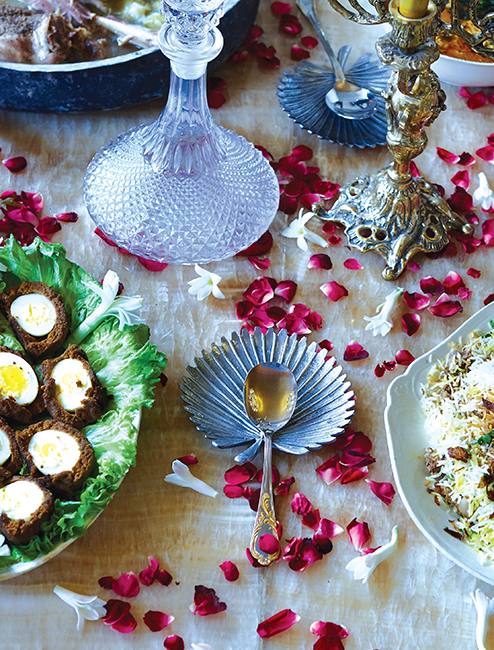

The Hyderabadi believes – ‘Khaate waqt aata hai dost. Sotey waqt aata hai dushman.’ (A friend visits at mealtime. An enemy visits while you sleep.) Each culture is known by its culinary traditions, said Abdul Halim Sharar, the prolific Urdu journalist, chronicler and novelist who is best remembered today for his literary publication,Guzhista Lucknow. The rare refinement that gave birth to Hyderabadi cuisine can only be understood by reflecting on its history and culture. The roots of what we now know as Hyderabadi cuisine may be traced to a coalescence of several strands of cultural and culinary heritages.
From the foundations of ancient Telangana, the overlapping present states of Maharashtra, Andhra Pradesh, Karnataka and Odisha; and the historical populations from erstwhile Mughal North, Turks, Persians, Arabs, British, not to speak of Kayasthas, Marwaris, Parsis and Bohras – Hyderabadi cuisine as we know it now has all these influences. And as an aside, during British rule, many Lucknowi families, administrators, khansamas, poets and other artists migrated to Hyderabad, which was ruled by the Nizams and known for its extraordinary wealth and opulence. The Awadh dynasty, too, being from the Shia sect had attracted a large number of Persians, or Iranians, and perhaps Peter Hassan’s reference to his Iranian roots and its possible influence on his home cuisine in Hyderabad lie there. My own grandmother was a Shia from that region.
The above-mentioned branches and strands of cuisine assimilating an extraordinary range of global diversity in spices, grains, roots, vegetables, fruits, legumes, herbs together with habits and lifestyles of notable order have brought to bear on what is now called Hyderabadi cuisine, which could well be described as Deccani or Dakhni fare or, more appropriately, Nizami cuisine of the state that evolved from the table of the Nizams and the migrant nobility. As there were limited dining options outside, the Hyderabadis entertained mostly at home, hosting elaborate wedding ceremonies and celebrating festivals such as Eid, Ramazan, Diwali and Dussehra.
In the traditional style, old Hyderabadi families ate their daily meals laid out on dastarkhans and they were seated at chowkis during celebrations, festivals and get-togethers. Food was usually served all together but typically eaten in courses. Different communities settled in Hyderabad for long may have some variations in the overall composition of recipes to suit the palate, but broadly the order of service remains the same and individual dishes could be claimed as house specialities indeed as it would be elsewhere. All in all, Hyderabadi cuisine has not been on the sidelines and has an unmistakable imprint on the national stage.
Doreen’s wonderful book contains the classic dishes but also several lesser-known recipes. Peter always calls her the anchor of his life, which she is, as she successfully moors the family together and graciously hosts friends, such as myself. For I have been a constant guest at the Hassan home for decades and am truly an example of the fact that khaate waqt aata hai dost! I do believe that this rare cookbook with its priceless recipes and fascinating family history will introduce everyone not just to Hyderabad and its cuisine, but also the Hassan family.
Habib Rehman
